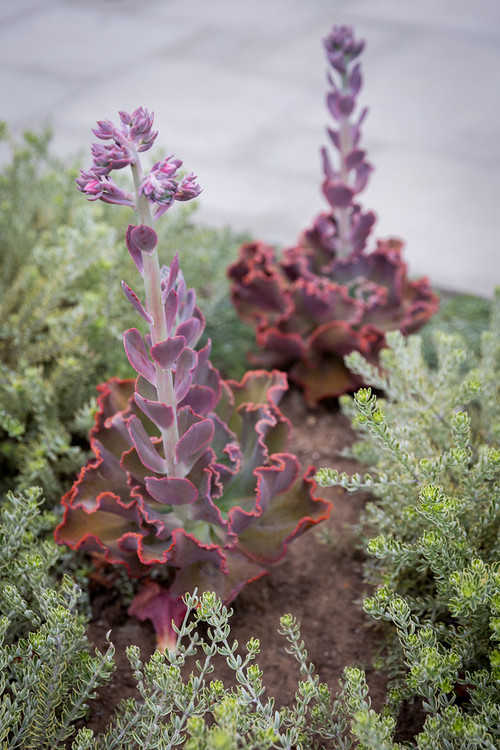WHICH MATERIAL IS RIGHT FOR YOUR HARDSCAPING PROJECT?
Four leading options to consider

Visit your local garden center for beautiful flowers, shrubs, trees and more.
LoveYourPlants.org is brought to you by AmericanHort, in partnership with the National Association of Landscape Professionals.

Presented by the National Association of Landscape Professionals in partnership with 
Lauren Dunec Hoang
While you’re thinking about goals for the year, don’t forget about adding gardening to the list. Gardening can be a great way to accomplish common resolutions like eating healthier, getting more active and reducing stress while doing something you enjoy. To take your garden to the next level, consider adding some of these garden-specific goals to your resolution list.

1. Plant a fruit tree. This New Year’s resolution for your garden might top the charts for maximum reward for the effort. A fruit tree — whether it gives you sweet cherries, peaches, apples, pears, figs, plums, nectarines or persimmons — sets up you and your garden for years of enjoyment, if not decades.
To get started, choose a fruit tree that will produce well in your region. This is largely determined by your soil type and “chill factor” (number of hours the temperature drops below 45 degrees Fahrenheit, or 7.2 degrees Celsius, between November and February) of your region. Source fruit trees through a local nursery or reputable online source, rather than a big-box store, to ensure that you’re receiving trees that are appropriate to your climate and grafted on root stock that will thrive in local soil. Fruit trees all grow best and produce the sweetest fruit in areas with at least six hours of full sun.
2. Revamp your side yard. Often a neglected area of gardens, side yards can be transformed into beautiful winding walkways, private seating areas or — if you have enough sun — areas for growing veggies and herbs.
You can get started right away in mild climates by planting, clearing the space and installing new walkways or features like arbors. In snowy climates, bookmark ideas for your side yard now and wait until the ground warms up to start digging.
3. Try a new planting combination. As you embrace change in other areas of your life, consider switching up your planting routine as well. Instead of annual flowers for color in beds, try perennials that will come back year after year. Play around with planting combinations at the nursery, putting plants next to each other that take the same light and water requirements, and seeing how they complement each other. You may be surprised by the combinations that work well.

For example, consider this dramatic pairing of ‘Morning Light’ coast rosemary (Westringia fruticosa ‘Morning Light’), with its silver foliage, and a ruffled pink echeveria. Although they come from different sections of the nursery, both plants thrive with low water and full sun, and the differences in foliage color and form make for a stunning combination.
4. Hone your gardening skills. Whether you’re new to gardening or are a seasoned pro, there are always ways to broaden your knowledge of plants and design. Sign up for a class or lecture on a topic of your choice, such as container gardening, water gardens, pruning, orchard care or how to create an espalier. Master Gardener programs, garden clubs, community colleges and local botanical gardens are great resources for classes at a variety of price points.
Cleveland sage (Salvia clevelandii) and California poppies (Eschscholzia californica) at the Don Edwards San Francisco Bay National Wildlife Refuge in Northern California
5. Convert part of your garden to native plants. Working native plants into you garden can help cut down on water and fertilizer use and provide habitat islands for native birds, bees, butterflies and other pollinators.
You may not be ready to trade in your existing garden for an all-native landscape, but consider adding some native species to mixed beds or devoting a section of your backyard to native, pollinator-friendly plants.

6. Plant a climbing rose. Increase the charm of an arbor or outbuilding by planting a climbing rose to ramble up the side. David Austin’s ‘Bathsheba’, shown here, is a new 2018 variety to try. The vigorous plant sends out 10-foot-long canes with apricot-colored flowers that have a classic tea and floral fragrance. You’ll want to order your roses soon, as new varieties sell out quickly, for planting between January and mid-May, depending on your climate.
7. Hang a bird feeder. Help feed native birds and winter migrants by setting up a feeder in your yard, when food sources are increasingly scarce in winter. Also, think about providing a water source. In cold climates, available water can be frozen and unavailable to birds. Set out a plant saucer filled with warm water as a drinking and bathing spot.
8. Try farm to table. Grow some of your own fruits, veggies and herbs and bring down both your carbon footprint and your weekly grocery bill. A few to plant this spring for a quick reward: lettuces, chives, snap peas, carrots and radishes. If you don’t have much room, try a pot of culinary herbs on your back step or a sunny windowsill, or experiment with a new ingredient like lemongrass.

9. Make it easier to get outside. We all need an extra incentive sometimes. Whether it’s the hope of finding something tasty to eat, the pleasure of picking herbs for a recipe or the lure of a cozy outdoor fireplace, we often need concrete reasons to get out of the comforts of being indoors.
While adding a luxe outdoor living feature such as a fire pit, outdoor kitchen, bocce court or pool can provide a reason to get outside, often simple add-ons can help entice us out as well. Colorful throw cushions on the seats and backs of this L-shaped brick bench, for example, make the seating area far more inviting with or without the fire pit.
10. Visit your local botanical garden for inspiration. Although botanical gardens are at a larger scale than most of our home gardens, many of the ideas can be replicated on a smaller scale. Take a stroll through your local botanical garden and look for pleasing plant pairings, great foliage plants or ideas for low-water plants. Aim to re-create one of the planting ideas in your home garden.
More from Houzz
How to Start Growing Native Plants
We recently updated our Privacy Policy. By continuing to use this website, you acknowledge that our revised Privacy Policy applies.